Recent Storm Damage Posts
3 Steps To Take After a Home Flood in Salt Lake City, UT
8/28/2024 (Permalink)
 Flood in Salt Lake City, UT
Flood in Salt Lake City, UT
Flooding in Salt Lake City, Utah, can be a devastating event for homeowners. The combination of heavy rain, rapid snowmelt, or plumbing failures can lead to significant water damage, affecting both the structure of your home and your personal belongings. In the aftermath of a home flood, it's crucial to act quickly and efficiently to minimize damage and ensure a smooth recovery process. Here are three essential steps to take after a home flood in Salt Lake City:
Step 1: Ensure Safety First
The first priority after any home flood is safety. Floodwaters can pose numerous hazards, from electrical risks to contaminated water, so it's important to approach the situation with caution.
1.1 Turn Off Electricity and Gas
Before entering any flooded area, ensure that the power and gas supply to the affected areas of your home are turned off. Water and electricity are a dangerous combination, and coming into contact with live electrical wires or outlets can result in serious injury or even death. If you are unable to safely access the circuit breakers, contact a professional electrician to handle this task. Similarly, turning off the gas supply can prevent potential leaks or explosions, which can be exacerbated by water damage.
1.2 Avoid Contact with Contaminated Water
Floodwater is often contaminated with sewage, chemicals, and other hazardous substances, especially if the flooding was caused by a natural disaster or sewage backup. It's important to avoid direct contact with floodwater to prevent exposure to harmful bacteria and viruses. Wear protective clothing, such as rubber gloves, boots, and waterproof gear, if you need to enter the affected area.
1.3 Evacuate if Necessary
If the flooding is severe or if the structural integrity of your home is compromised, evacuate the premises immediately. Your safety and the safety of your family should always come first. If you're unsure whether it's safe to stay in your home, consult with local authorities or emergency services.
Step 2: Document the Damage
After ensuring that your home is safe to enter, the next crucial step is to document the damage. Proper documentation is essential for filing insurance claims and for keeping track of the restoration process.
2.1 Take Photographs and Videos
As soon as it's safe to do so, take detailed photographs and videos of the damage. Capture the extent of the flooding, including water levels, affected rooms, and damaged belongings. Make sure to document any visible structural damage, such as cracks in the walls, warped flooring, or collapsed ceilings. This visual evidence will be invaluable when filing your insurance claim and will help restoration professionals assess the damage more accurately.
2.2 Create an Inventory of Damaged Items
In addition to visual documentation, create a written inventory of all the damaged items in your home. Include details such as the item's description, approximate value, and the extent of the damage. This inventory will help your insurance adjuster determine the value of your claim and ensure that you are adequately compensated for your losses.
2.3 Notify Your Insurance Company
Contact your insurance company as soon as possible to report the flood and begin the claims process. Provide them with the documentation you've gathered, including photographs, videos, and the inventory of damaged items. Be prepared to answer any questions they may have and to provide additional information as needed. Your insurance company may also send an adjuster to assess the damage in person.
Step 3: Begin the Restoration Process
Once the initial safety concerns have been addressed and the damage has been documented, it's time to begin the restoration process. Quick action is essential to prevent further damage, such as mold growth, and to restore your home to its pre-flood condition.
3.1 Water Extraction and Drying
The first step in the restoration process is to remove the standing water from your home. Depending on the severity of the flood, this may require the use of pumps, wet vacuums, or other specialized equipment. It's important to remove the water as quickly as possible to prevent further damage to your home's structure and to reduce the risk of mold growth.
Once the standing water has been removed, the affected areas must be thoroughly dried. This process typically involves the use of industrial-grade dehumidifiers, air movers, and fans. It's crucial to ensure that all areas, including walls, floors, and furniture, are completely dry before proceeding with any repairs. Moisture that is left behind can lead to mold growth, which can cause long-term damage and health issues.
3.2 Mold Prevention and Remediation
Mold can begin to grow within 24-48 hours after a flood, making it essential to address this issue promptly. Even if you can't see mold, it's important to treat the affected areas as if mold is present. This typically involves cleaning and disinfecting surfaces with antimicrobial solutions and removing any materials that cannot be thoroughly dried, such as carpet, drywall, or insulation.
If mold growth is extensive, or if you're unsure how to handle the situation, it's best to contact a professional mold remediation service. They have the expertise and equipment necessary to safely and effectively remove mold and prevent it from returning.
3.3 Repair and Restoration
After the water has been removed and the affected areas have been dried and treated for mold, the next step is to begin repairs. This may include replacing damaged drywall, flooring, and insulation, as well as repairing any structural damage. If the flood caused significant damage to your home's electrical or plumbing systems, these will need to be inspected and repaired by licensed professionals.
In some cases, the restoration process may also involve cleaning and restoring personal belongings, such as furniture, clothing, and electronics. SERVPRO of Salt Lake City is experienced in handling all aspects of flood restoration, from water extraction and drying to mold remediation and repairs. Their team of professionals is equipped with the knowledge and tools necessary to restore your home to its pre-flood condition, making it ""Like it never even happened.""
Experiencing a home flood in Salt Lake City, UT, can be overwhelming, but taking the right steps immediately after the event can make a significant difference in the outcome. By ensuring safety, documenting the damage, and beginning the restoration process promptly, you can minimize the impact of the flood and get your home back to normal as quickly as possible. If you need assistance with flood restoration, don't hesitate to contact SERVPRO of Salt Lake City for expert help.
Restoring Hope After the Storm: SERVPRO’s Storm Damage Restoration Process in Salt Lake City, UT
7/1/2024 (Permalink)
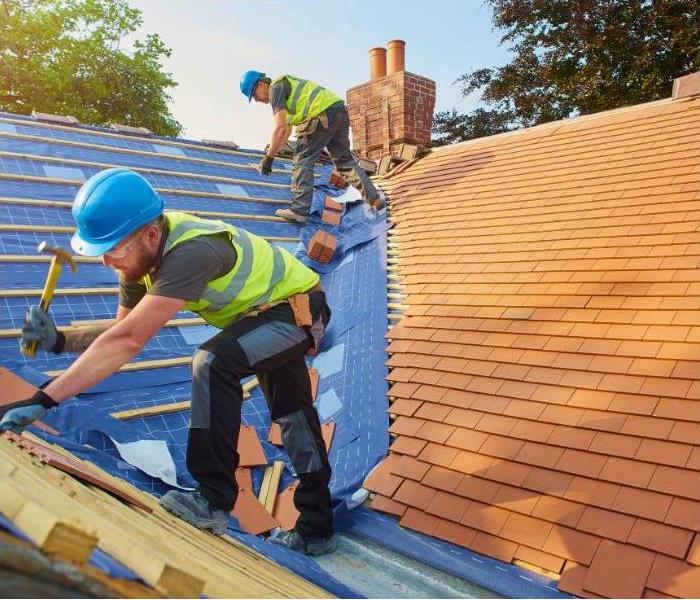 Storm Damage Restoration Process in Salt Lake City, UT
Storm Damage Restoration Process in Salt Lake City, UT
Storms can wreak havoc on communities, causing extensive damage to homes and businesses. Salt Lake City, UT, is no stranger to such events, where powerful storms often leave a trail of destruction. In these challenging times, the need for prompt and effective restoration services becomes paramount. SERVPRO, a leader in the restoration industry, offers a comprehensive storm damage restoration process that brings homes and businesses back to their pre-storm condition. Let’s delve into the detailed steps SERVPRO takes to restore storm-damaged properties in Salt Lake City.
Step 1: Emergency Contact
The restoration process begins the moment you call SERVPRO. Available 24/7, their emergency contact line ensures that help is always within reach. The SERVPRO representative gathers essential information about the damage, allowing them to dispatch a highly trained response team to your location quickly. This immediate response is crucial in mitigating further damage and setting the stage for a successful restoration.
Step 2: Inspection and Damage Assessment
Once on-site, SERVPRO’s technicians conduct a thorough inspection of the property. They assess the extent of the storm damage, checking for issues such as water intrusion, structural damage, and compromised roofing. This step involves using advanced tools and technology, including moisture meters and infrared cameras, to detect hidden moisture and other underlying problems. The findings from this assessment help in formulating a tailored restoration plan that addresses all aspects of the damage.
Step 3: Board-Up and Roof-Tarp Service
Storms often leave properties vulnerable to further damage from the elements or unauthorized access. To protect your home or business, SERVPRO provides board-up services for broken windows, doors, and compromised walls. Additionally, they offer roof-tarp services to cover damaged roofing areas, preventing water from entering the property. These temporary measures are essential for securing the property and stabilizing the situation before more extensive restoration work can begin.
Step 4: Water Removal and Drying
Water damage is a common consequence of storms, leading to potential issues like mold growth and structural deterioration. SERVPRO’s team uses powerful pumps and industrial-grade wet/dry vacuums to remove standing water from the affected areas. Once the bulk of the water is extracted, the drying process begins. Using high-speed air movers and dehumidifiers, SERVPRO ensures that all moisture is thoroughly removed from walls, floors, and other materials. This step is critical in preventing mold growth and further structural damage.
Step 5: Cleaning and Sanitizing
Storm damage often brings in contaminants and debris, making thorough cleaning and sanitization a vital part of the restoration process. SERVPRO’s technicians clean all restorable items and structures that have been affected by the storm. This includes a variety of cleaning techniques to restore belongings to their pre-damage condition. Moreover, they use antimicrobial treatments to prevent mold and mildew from forming. Air scrubbers and fogging equipment may also be utilized to remove odors and improve air quality in the property.
Step 6: Restoration and Repair
Restoration is the final step in SERVPRO’s comprehensive storm damage restoration process. This phase involves repairing and rebuilding damaged structures to return your property to its pre-storm condition. Whether it’s minor repairs like replacing drywall and installing new carpet, or major reconstruction projects, SERVPRO has the expertise to handle it all. They coordinate with insurance companies to streamline the claims process, ensuring that you receive the necessary support for your restoration efforts.
The SERVPRO Advantage in Salt Lake City
What sets SERVPRO apart in Salt Lake City is their commitment to excellence and customer satisfaction. Their team of professionals is highly trained in storm damage restoration, equipped with the latest technology and techniques to handle any level of damage. SERVPRO’s rapid response time, meticulous attention to detail, and comprehensive restoration services make them a trusted partner in the aftermath of a storm.
Community Support and Education
Beyond their technical capabilities, SERVPRO plays a crucial role in supporting the Salt Lake City community. They offer educational resources and workshops to help residents and business owners understand the steps they can take to minimize storm damage. By fostering a sense of preparedness and resilience, SERVPRO empowers the community to face future storms with greater confidence.
Real-Life Success Stories
The impact of SERVPRO’s restoration services can be seen in countless success stories across Salt Lake City. From helping a family return to their storm-ravaged home to restoring a local business and preventing significant financial loss, SERVPRO’s work makes a tangible difference in people’s lives. These stories highlight the importance of professional restoration services in the wake of a disaster and serve as a testament to SERVPRO’s dedication and expertise.
Storm damage can be a devastating experience, but with the right support, recovery is not only possible but also efficient and effective. SERVPRO’s comprehensive storm damage restoration process in Salt Lake City, UT, provides a lifeline to those affected by severe weather. From immediate emergency response to the final touches of restoration, SERVPRO stands by your side, ensuring that your property is restored to its former glory. Their dedication to excellence, advanced technology, and compassionate customer service make them an invaluable asset in the face of storm-related challenges.
How Wildfires Can Cause Increased Flooding Damage
7/19/2022 (Permalink)
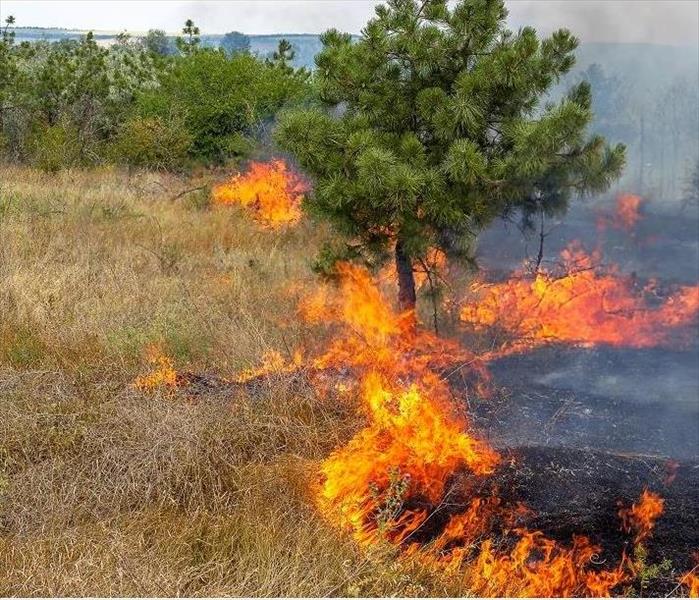 Wildfire damage
Wildfire damage
If a fire occurs in or near your Salt Lake City, UT, home, you may think the worst is over once the flames are extinguished. Yet that is not the case. Fires can lead to flooding, as well. After a fire, your home will likely have holes in the roof and walls. Water from a storm could enter your house through these holes. Even if your home itself was not affected by a fire, a wildfire near your property could make it more susceptible to flooding damage.
Wildfire Damage and Floods
When wildfires burn through the terrain, they destroy vegetation that typically absorbs rainfall. As a result, the ground is left:
- Barren
- Unable to absorb water
- Charred
It can take up to five years for vegetation to re-grow after a wildfire. Until then, the areas surrounding the damage will be more at risk for flash floods. The rainwater from storms may also pick up sediment and soil as it moves across the charred ground. This could lead to harmful mudflows.
Unfortunately, most homeowners’ insurance policies do not include flood coverage. If your house floods, even if the flood results from a wildfire out of your control, you could be responsible for the full cost of professional restoration services.
This flood cleanup can be quite expensive, as well. In 2010, an average flood claim cost $28,000. In fact, just 1 inch of water in your home can lead to $25,000 worth of damage.
Thankfully, you can purchase separate flood coverage via the FEMA NFIP. The National Flood Insurance Program offers insurance to both renters and homeowners.
Getting Flood Coverage
If you live in one of the 23,000 participating communities, you are eligible for the NFIP. In fact, if you live in a high-risk area and have a mortgage from a government-backed lender, you are legally required to obtain flood coverage. Your insurance agent can help you purchase a flood policy through the NFIP. There may be a 30-day waiting period before the coverage goes into effect.
The cost of this coverage varies based on your property’s flood risk. If you want to lower your premiums, you can enact flood mitigation measures. For instance, you can elevate your utilities and fill in your crawlspace or basement.
Other Steps To Take Before the Next Flood
Once you have purchased flood insurance from the FEMA NFIP, you should take additional steps to prepare your home and family for the next major storm. Gather all necessary supplies so you will not have to drive to the store in the middle of a storm.
You should also keep an inventory of the various items in your home. This will be important information for the insurance adjuster. Any important documents, such as birth certificates, should be kept in a waterproof location.
In extreme situations, you may be asked to evacuate your house ahead of the storm. Plan a safe evacuation route, and make sure that everyone in your home understands it.
Thanks to the FEMA NFIP, you can purchase insurance that covers the cost of restoration after a flood. This is particularly important if you live in a community prone to wildfires.
3 Steps To Take After a Home Flood
7/14/2022 (Permalink)
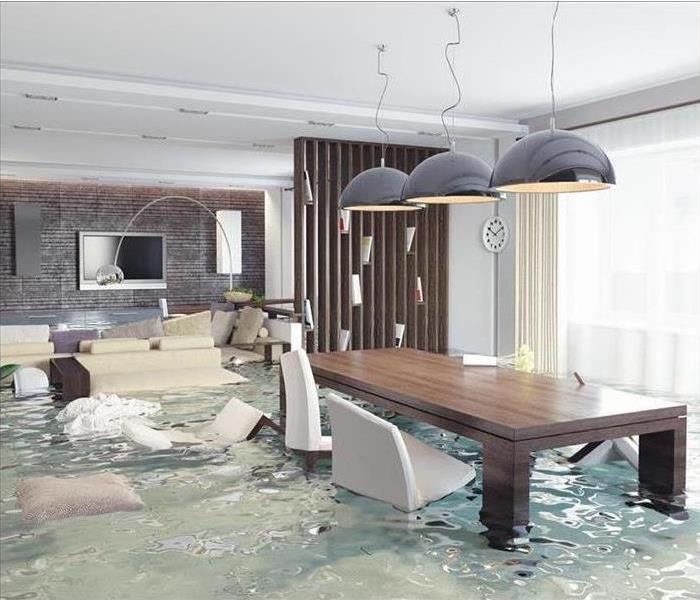 Flooding can lead to severe damage.
Flooding can lead to severe damage.
Even if you don't live near a water source a home flood can happen to you. It is important to have a plan in place before a flood occurs so that you can minimize the amount of damage to your home. Consider including these three steps in your flood plan.
3 Steps to Include in Your Flood Plan
- Contact Your Insurance Company
Most homeowners policies exclude flood damage; however, some types of storm damage may be covered. If you have a separate flood insurance policy, you should contact the insurance company to file a claim. Because floods can cause extensive damage that requires water restoration services, it is a good idea to purchase flood insurance, even if your home is not located in a high-risk area.
- Begin Cleanup As Soon As Possible
You should not attempt to reenter your house after a home flood until local authorities say it is safe. However, as soon as you are able, you should begin the cleanup process. Avoid coming into contact with floodwaters. Most homeowners should contact a restoration company in Salt Lake City, UT, rather than attempt a do-it-yourself solution. Standing water can be a safety hazard and flood damage can be very difficult to clean without the right equipment and training.
- Dry Out Your Property
The longer your property stays wet, the more likely you are to have issues with rot, mold and other damage. Anything that can not be completely dried out should be discarded. If it is safe to enter your home, you can begin removing wet contents and placing it outside to dry if the weather permits. Some amount of drying can be accomplished by using fans and dehumidifiers, but professional equipment may be necessary.
The damage that occurs during a home flood will continue to get worse the longer it takes to clean and dry the property. Taking the proper steps after a flood can prevent unnecessary additional damage.
How To Make a Flood Claim?
5/24/2022 (Permalink)
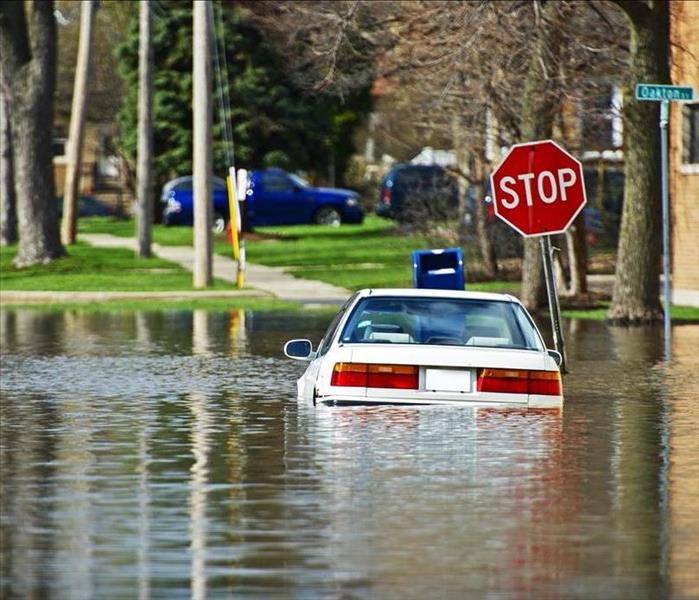 Learn how to make your Flood Claim by Following These Tips.
Learn how to make your Flood Claim by Following These Tips.
Floods can cause devastating damage to homes. The first step to restoring your property after a flood is to file a flood claim.
How To File a Flood Insurance Claim
Filling your claim for flood damage is a multi-step process:
1. Contact the Insurance Company
The first thing you must do is contact your insurance company. Most homeowners insurance does not cover flood damage so your flood insurance may be with a different insurance company than your homeowner's insurance. If you aren't sure who your insurance carrier is, you can call the National Flood Insurance Program Call Center at 1-800-427-4661 to find out.
2. Provide Information
Your insurance company will need several pieces of information. This may include your policy number, a phone number and email address where your insurance company can contact you and the name of your mortgage company if you have one. If you don't know all of this information, your insurance or claims agent may be able to look it up for you.
3. Document Your Damage
It usually takes 24-48 hours for your insurance company to assign an adjuster to your claim. However, if flooding is widespread, it may take longer. While you are waiting, take photos and videos of your damaged property and the flood lines on the outside and inside of structures. Photograph the make, model and serial number of electronics and appliances. Do not enter flooded areas or structures until you have been told they are safe.
4. Discard Flood Damaged Items That Are Unsafe
After you take photos and keep samples of materials such as pieces of carpet, flooring, drapes or wallpaper, throw away flood-damaged items that are unsafe to keep, such as perishable food, cushions, clothing and pillows.
5. Contact Repair Services
If the electrical, HVAC or water systems of your home are damaged, contact repair services. However, talk to your insurance company about your flood claim before you sign any contracts. This is also a good time to schedule a flood remediation company in Park City, UT, to begin drying and cleaning your damaged home.
6. Meet With the Adjuster
When the insurance adjuster arrives, ask to see the adjuster's Flood Control Number card and other official identification. This protects you against scammers who may be posing as insurance adjusters. Review the adjuster's written report and estimate for any errors. A legitimate insurance adjuster will not ask you to pay your deductible, charge you a fee or ask for money for any other reason.
7. Receive Payment and Begin Repairs
Once the insurance company receives the adjuster's report and estimate, it will review the report, along with any documentation you have provided, to establish the value of your claim. If you disagree with the value the insurance company determines, you may need to submit additional supporting documentation to prove your claim. Once a settlement is reached, the insurance company will issue you a check and you can use the money to make repairs.
The flood claim process can be lengthy, particularly if there are many people in your area with damaged property. The faster you get the process started, the sooner you can expect to receive payment.
What Role Does the Federal Emergency Management Agency Play After a Storm?
5/7/2022 (Permalink)
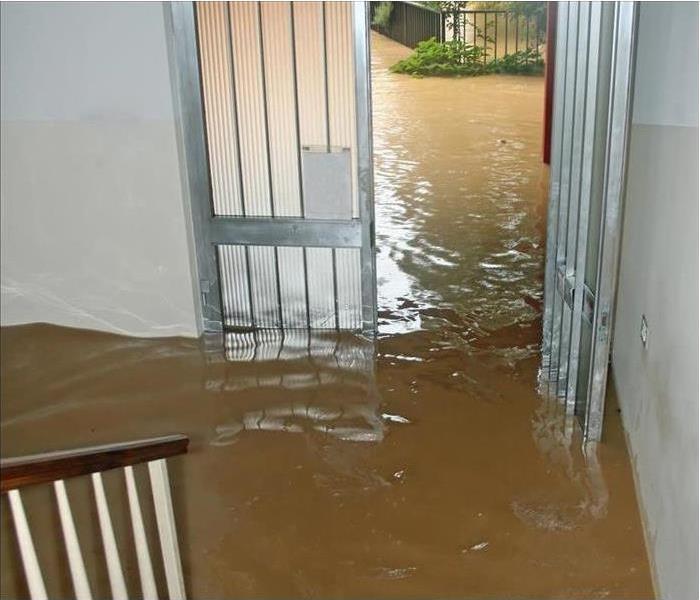 Take into account these tips and Avoid Storm Damage in your Property.
Take into account these tips and Avoid Storm Damage in your Property.
Wherever you reside, the unthinkable could occur at any time. When a disaster devastates your property and others' in Salt Lake City, UT, you'll probably feel overwhelmed and unsure of what to do next. If the loss is significant enough, the Federal Emergency Management Agency may be dispatched to the scene.
FEMA was formed in 1979 to "lead America to prepare for, prevent, respond to and recover from disasters with a vision of 'A Nation Prepared.'" For example, it assists survivors of disasters such as severe flooding in rebuilding their lives. It has helped with numerous tragedies in the past and continues to now. It serves several important roles, including the following.
4 Roles FEMA Serves After a Storm
- Assessing the Affected Areas
First, it performs detailed assessments of the area in which tragedy has hit. It determines what type of assistance the victims require. These needs can vary depending on the kind of disaster. It basically operates as the "boots on the ground" for everything from hurricanes to wildfires to terror attacks."
- Acting as a Liaison Between Federal and Local
It acts as a liaison between the affected area and the federal government. Various factors are controlled physically and financially by FEMA. It usually involves allocating supplies, maintaining resources and working with local and state officials.
- Determining the Appropriate Response
It determines the required response and assembles the appropriate troops. Law enforcement, for example, may be needed. Hurricanes and other kinds of disasters can bear several types of significant losses. This can include damage from wind, flooding and even fires.
- Coordinating the Response
Finally, it helps coordinate responses such as mobilizing troops to evacuate people, provide tarps for roofs and distribute food and water. It also locates and provides shelter and other basic needs for displaced victims.
Although FEMA takes significant control after a disaster occurs, their help is no substitute for insurance. If you have a flood or other kinds of loss, storm damage remediation experts will likely also be necessary. They can return your home to its preloss condition as quickly as possible.
How Much Damage Can a Winter Storm Do?
2/23/2022 (Permalink)
 Prevent Storm Damage by following These Tips related to Winter Storms. For more information, just call us.
Prevent Storm Damage by following These Tips related to Winter Storms. For more information, just call us.
Homeowners are usually well aware of the potential hazards of a winter storm; they expect snowfall, ice accumulation, and the potential for slips and falls and car accidents. Still, most remediation specialists in Salt Lake City, UT, also warn of potential structural damage.
While homes in heavy snow climates will usually have the qualities and characteristics that allow them to withstand heavy snow and frigid temperatures, homeowners still need to be aware of their responsibilities to ensure quality home care.
There are several things you want to do to ensure your home is protected from the encroaching winter weather.
- Shovel and salt pathways
- Maintain a clear and clean roof
- Assess seals on all entryways and windows
- Check the HVAC system
Winter Storm Damage and Recovery
A blizzard can be a common winter storm, and it brings with it frigid temperatures and a tremendous amount of snow. While these storms present significant travel threats, they also present risks to your house. The weight of the snow can lead to extensive roof damage; the temperatures can result in cracked windows, and heavy ice might result in power outages.
While there are multiple threats to your property during a winter storm, it is necessary to focus on a quick recovery after the storm. Wintertime is no time to be without power or heat. You should contact a mitigation professional so they can provide a quick response and recovery.
Common Damages During a Winter Storm
Winter storms will often result in roof damage because of snow and ice buildup. Depending on the style of your roof and its integrity, the weight of the snow could cause minor to severe collapses. If the roof is strong enough to hold out, it is possible that it will succumb to water damage.
When ice builds along the edges of a roof, it creates ice dams. As the weather warms, these dams and the snow melt, forcing the water to find alternative exits. Unfortunately, the water will typically back up under the shingles and soak into the sheathing. If enough water makes it to the underlayer of the roof, it could rot the wood or cause mold.
Aside from roof damage, the cold and ice can lead to power outages and window and door damage. Depending on the style of your HVAC system, you could lose heat during a winter storm. If the heat is out for too long, the frigid temperature could cause windows and doors to crack.
Fundamental Recovery From the Storm
After a winter storm, you should assess your property. You want to look for cracks in windows and inspect the thickness of the snow on the roof. You should be careful if you get on a ladder in the snow. The steps can become slick, resulting in falls. It is better to call a remediation professional to the scene. These specialists have the right tools to make professional property assessments.
A severe winter storm is nothing to play around with. You want to remain sheltered during the storm, but you should assess your property afterward to assess potential damage. Contact a remediation company if you need help.
How To Prepare for Flood Damage
1/25/2022 (Permalink)
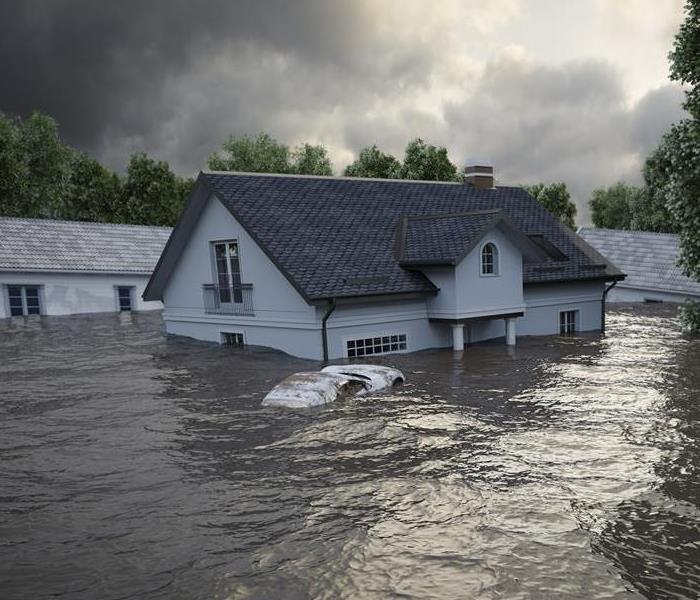 Consider these important tips if you experience Flood Damage in your Salt Lake City, UT property.
Consider these important tips if you experience Flood Damage in your Salt Lake City, UT property.
Damages from flooding exceed $40 billion worldwide every year. You can reduce the chance of suffering extensive flood damage by taking steps to prepare your property.
Tips for Preparing Your Property for Flood Damage
There are several steps you can take throughout the year and when flooding is imminent to help reduce your chance of damage.
1. Purchase Flood Insurance
Most homeowners insurance excludes coverage for damage caused by floods. Because even areas that are not in high-risk zones for floods can experience flash floods, it may be wise to purchase a separate flood policy. However, do not wait until storm damage is imminent to try to buy insurance. There is usually a 30-day waiting period from the time you buy your policy until it goes into effect.
2. Understand Your Flood Risk
Search for your address in Salt Lake City, UT in the Flood Map Service Center to get an idea of how likely you are to experience a flood. It may also be helpful to speak with neighbors who have lived in the area for a long time about how often their property has had flood issues.
3. Complete a Household Inventory
Capture videos and photos of all of your valuable property and store them in a safe place. This will help you if you need to file an insurance claim.
4. Store Important Documents Off-Site
While a water remediation company may be able to save some valuable documents, water damage can easily destroy these fragile items. Store important documents, such as birth certificates, medical records, passports and insurance documents in a watertight safety deposit box.
5. Anchor and Elevate Utilities
Protect important utility equipment, such as propane tanks, electrical panels, wiring, sockets, heating systems and appliances by elevating and anchoring them. You may need to hire a professional contractor to assist you.
6. Make Your Basement Water Resistant
Install a sump pump and water alarm in your basement. Install a backup pump that is battery-operated to protect you when the power goes out.
7. Clean Your Gutters
Debris, such as leaves, sticks and bird nests, in your gutters and downspouts can cause water to pool around your foundation, instead of drain away from your house. Clean out your gutters regularly and before any expected weather event. Consider installing guards on your gutters to keep debris out.
8. Elevate or Relocate Furniture
If you know a flood is imminent, move furniture and other valuable items to the attic or the highest floor in your home. If your home is on a single level, you can elevate your furniture by placing cinder blocks or similar materials under the legs.
9. Monitor Weather Reports and Make a Plan
If a flood becomes bad enough, you may need to evacuate your home. Make a plan for how you will get your family members and pets to a safe place. Use a weather radio to monitor weather reports and sign up for emergency alerts.
There is no way to eliminate your flooding risk. However, these steps can help protect your property, your finances and your loved ones.
Flood Safety Tips for Homeowners
10/19/2021 (Permalink)
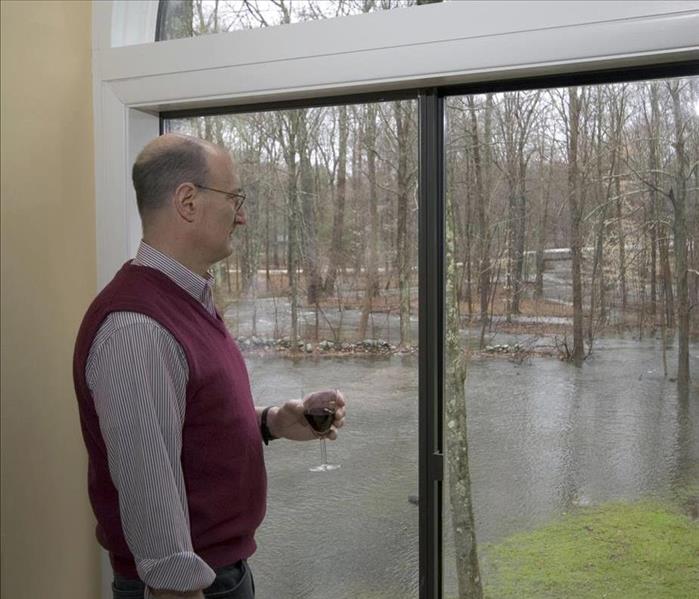 Taking some preventions will reduce the storm damage to your Salt Lake City, UT home.
Taking some preventions will reduce the storm damage to your Salt Lake City, UT home.
Storm season in Salt Lake City, UT, brings several possible challenges to homeowners. One of the main concerns is flood safety. You can't control the weather, but you can take some precautions.
Tips To Protect Your House.
Elevate Items for Flood Safety
Electricity and water don't mix. One of the most sensible safety tips starts with identifying the flood line. Once you know how far water is likely to rise, you can more easily safeguard the electrical items both inside and outside your home:
- Sockets
- Wiring
- Circuit breakers
- Air conditioner units
- Generators
These and other electrical appliances should be placed a foot above the flood line if possible. It also doesn't hurt to elevate the things in your basement that are likely to become a hazard if they get wet. By keeping electrical items out of the way of potential floods, you can minimize a lot of damage.
Maintain Sewer To Prevent Blockages
Regular sewer maintenance is always important, but it's especially crucial during storm season. Excess flooding from a heavy downpour can overtax municipal drains, causing a backup. If your home already has sewer problems, this can lead to some unpleasant results in your bathroom or kitchen.
One way to protect your home from a flooded city sewer is to install valves to prevent backflow. Check or flap valves provide a one-way seal that keeps wastewater flowing outward. Manually operated gate valves provide even better protection. No matter what kind of valve you choose, you need one at every point where your plumbing connects to the sewer line.
Maximize Water Flow Away From Home
The best way to ensure flood safety is to keep the water from coming toward your house in the first place. Flood restoration specialists recommend that you upgrade your landscaping to slope away from your house so that pooling water doesn't encroach on it during a heavier storm. Keep drains, downspouts, and gutters clean so that water flows easily off your roof and away from your foundation.
Sometimes water rushes toward your house because it floods the street and simply has nowhere else to go. If this happens, contact your county department that is in charge of street maintenance to report the problem and inquire about what can be done to fix it. After all, if it affects your house, it probably is a nuisance to your neighbors as well.
Protect Your Foundation from Flooding
Floodwater will seep into cracks in your foundation any chance it gets. This is one of the reasons it's so important to inspect your foundation and repair any damage found as soon as possible. You can also install valves that direct the flow of water through designated paths through the building so that it doesn't rise and cause damage.
Placing barriers around entryways and the perimeter of your foundation is another way to flood-proof your home when a storm is on its way. Sandbags and inflatable barriers can be used to block extra water.
Knowing how to protect your home from flooding empowers you as a homeowner. Follow these flood safety tips to prevent as much damage as possible during a storm.
Reasons To Steer Clear of Flooded Roads
8/19/2021 (Permalink)
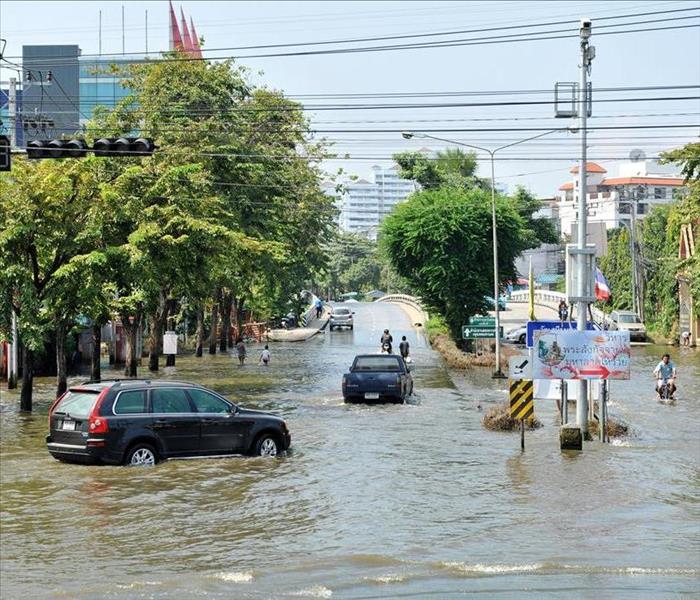 Flood roads in Park City, UT, are dangerous for your vehicle.
Flood roads in Park City, UT, are dangerous for your vehicle.
Storm season in Park City, UT, often results in flooded roadways. While these conditions are inconvenient and can delay your schedule, that's no excuse to try to drive through a flooded street. It's better to stay at home and miss a meeting than to experience some of the consequences of choosing to leave before the storm has passed.
Extensive Vehicle Damage
Your vehicle was not made to drive through deep water. If you drive on flooded roads, your car may never be the same afterward. There are several common problems that occur when a vehicle is flooded:
- Hydro-locked engine
- Short-circuited electronics
- Contaminated fluids
- Rusted components
Flood damage can cost you a lot in repairs or total your car altogether. While it's possible that a great mechanic can fix what is wrong with the engine and certified water restoration experts can get the funky smell out of your upholstery, it makes more sense to just avoid the problem in the first place by staying off the road or choosing a safer route.
Obscured Vision
When a roadway is blocked by flooding, the water is often murky. This means you can't see what's happening beneath the surface of the puddle. It's difficult to gauge just how deep the standing water on a flooded street is, even if you try to use the curb or other signposts as clues. Floodwater can quickly cause damage to the road, resulting in cracks or sinkholes that make the stream flowing across it deeper than it appears.
Another potential risk hidden from sight is all the debris that washes into the road during a storm. It's unlikely that the only thing blocking your path is water. Tree limbs, rocks, and other obstructions are probably in the flooded road as well, making navigation even more treacherous. Rather than taking a chance on a street with standing water, tune in to travel tips on the radio to find a better path to your destination.
Loss of Control
The biggest hazard of driving on flooded roads is the possibility of losing control of your vehicle. If the engine seizes up and stalls, you may not even be able to steer it to the side of the road before it stops working completely. You then have to wait for someone to tow your vehicle out of harm's way, hoping that no one else loses control and crashes into it in the meantime.
If the floodwater is both deep and fast, it can carry large objects, such as your vehicle, with it. You may not be able to get your door open to escape, which leaves you trapped in a moving car that you can't steer, going whichever direction the flood takes you. No one wants to be in a position with such an uncertain outcome.
There's never a good reason to drive through a flooded street. If you must get on the road, choose a route with adequate drainage or higher elevation so that you can safely get where you need to go. If no such route exists, it's better to wait out the storm than face the peril of the flood.
Individual Assistance Grants From FEMA
7/15/2021 (Permalink)
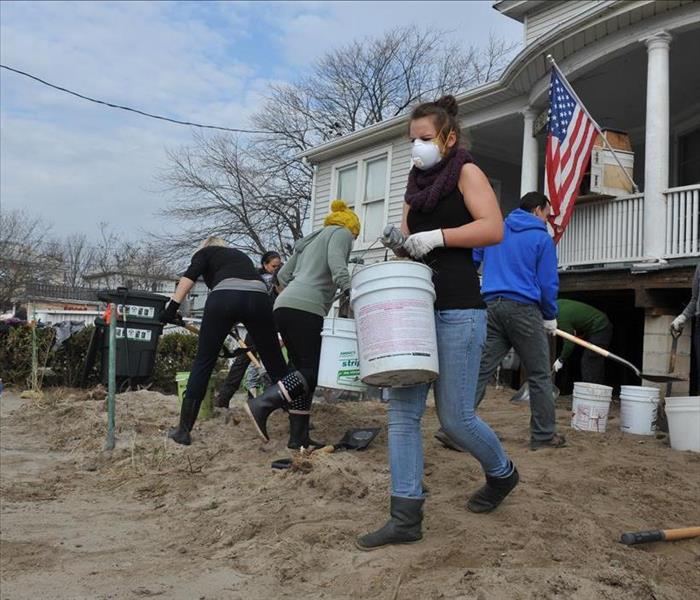 Protecting your home in advance will prevent serious and expensive storm damage in the future.
Protecting your home in advance will prevent serious and expensive storm damage in the future.
After a major natural disaster affects your Salt Lake City, Utah, home, FEMA, or the Federal Emergency Management Agency, may be one of the first sources of help. You can seek this assistance as an individual, and one of your first steps should be registering with the agency as soon as possible after damage to your home. You'll need to have specific information and paperwork available:
- Address of your damaged property
- Current contact information
- Insurance information
- Social security number
- Banking information
- Annual household income
What To Expect From Grants
Whether your property has been affected by wildfires or flooding, the costs of recovery, including the work completed by property repair and reconstruction professionals, can be overwhelming. This assistance is particularly helpful for people without insurance or with gaps in their insurance. The grants may cover:
- Home repairs
- Temporary shelter
- Medical and dental expenses
- Childcare costs
- Funeral expenses
- Replacement of personal property
After registering, a FEMA representative will call to schedule an inspection before approving the assistance. It's important to note that scam artists may show up claiming to be official inspectors, so ask for an identification card. Do not provide your credit card or any bank account information because there isn't a charge for these inspections.
Information From Insurance Providers
If you haven't yet experienced a major disaster, it isn't too soon to learn as much as possible about surviving and recovering. Ask your insurance provider about the steps you can take to protect your home against damage from an earthquake, flood, wildfire, or landslide. The more you do beforehand to prevent damage, the better off you'll be.
An Offer of Help
It isn't always possible to emerge unscathed, however, so research the ways that the FEMA Individual Assistance Program could help you. After all, the experience of a natural disaster is scary enough without knowing where you'll be sleeping at night; it's comforting to have many sources of assistance available.
Common Causes and Remedies for Sewer Odor
6/24/2021 (Permalink)
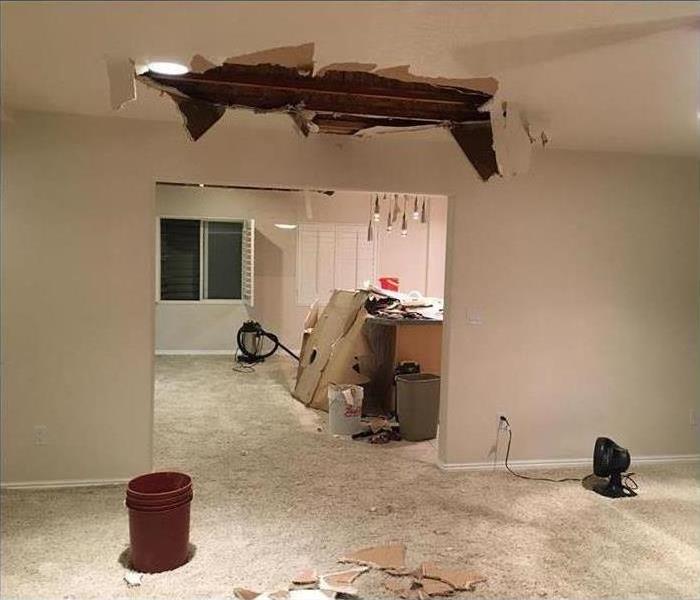 Roof damage from storm in Sugar House, UT home.
Roof damage from storm in Sugar House, UT home.
Having a sewer smell in your commercial building is unpleasant. While the fumes may not be harmful, they can certainly be an unwelcome distraction. There are several reasons you may be smelling sewer gas in your building in Sugar House, UT, and most of them have pretty simple remedies.
Causes of the Odor.
Smelling sewer odor does not usually mean that you have raw sewage wreaking havoc somewhere in your building. The more likely cause is the failure of one of several apparatuses that function to direct the gas outside. There are three main causes of indoor sewer smell:
- Dry traps with no wastewater to prevent gases from coming back through the plumbing.
- Blocked vents with a clog or backup that is preventing the gas from escaping through the normal channels.
- Damaged drain lines that release sewage under the property instead of carrying it away.
To get rid of the smell, you must first locate the problem. It may have an easy fix that you can do yourself, but it's important to call a plumber or sewer remediation services if you need to do so.
Solutions for the Odor
The first thing you should try to do is pour clean water down the drain from whence the smell comes. Dry traps from underutilized drains are the most common cause of sewer odors in buildings and making sure that you use the drain frequently can help prevent the problem or help resolve it once it occurs. If that doesn't work, your drain may need to be cleaned. Disinfecting the drain takes care of any bacteria that may be causing the smell. If none of your efforts get rid of the smell, however, it is time to call in the professionals to assess a potentially larger problem.
Sewer smell can happen any time there is a backup or some other type of plumbing problem. If you can't get rid of the problem on your own, calling a plumber can help you get your building smelling fresh and clean again.
Three Steps for Safety as a First Responder
2/24/2021 (Permalink)
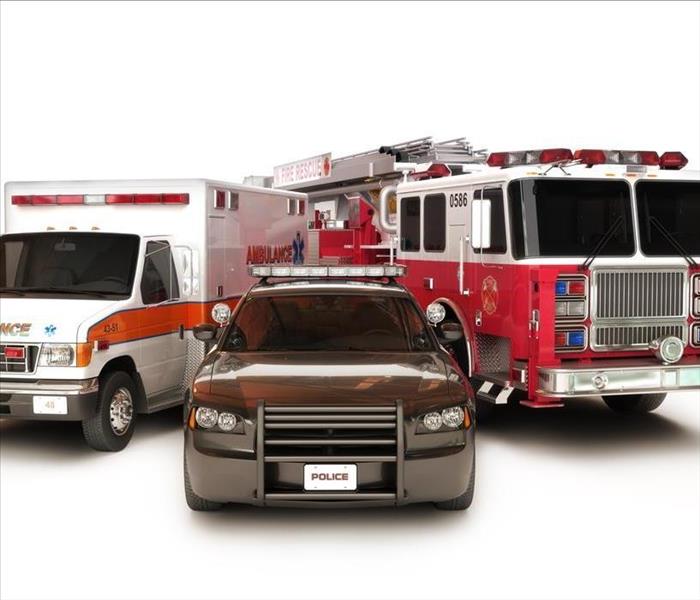 First responder's safety is important.
First responder's safety is important.
As a first responder in Park City, UT, your ability to keep others safe is dependent upon your own safety and well-being. This means that you have a responsibility to prepare yourself, as well as your home and family for possible flood disasters.
3 Steps for Safety
1. Develop Appropriate Handwashing Skills
As a first responder, handwashing is one of your most valuable means of avoiding illness and sharing illness with family members. Don't rush through this task:
- Use running water when possible.
- Lather enough soap to cover all parts of your hands, fingers (including fingernails), and wrists.
- Scrub your hands, between your fingers, under your nails, and over your wrists for at least 20 seconds.
- Rinse thoroughly under running water.
- Dry hands with a towel or allow your hands to air-dry.
Finally, avoid touching your face as much as possible.
2. Stay Up to Date With Vaccinations
Immunizations, such as a Hepatitis B vaccination and a new tetanus booster every ten years can help you avoid serious illness as you come into contact with a variety of contaminants, especially when you are part of a flood response. The CDC also recommends the rabies vaccine series in case of exposure to potentially rabid animals. As always, check with your medical professional for more information.
3. Personal Protective Equipment
When emergency restoration professionals arrive at your home to address necessary cleanup and repairs, they'll probably arrive in waterproof clothing, heavy-duty boots and gloves, eye protection, and protective masks. You should have access to the same. This type of PPE provides a barrier between your skin and contaminants in the floodwaters. After your work, remove this equipment in an isolated space and store it in a plastic bag away from your other clothes.
Just Three Steps
Take the time to thoroughly wash your hands. Get recommended vaccinations. Suit up in personal protective gear. These three simple steps can you stay safe as a first responder, so you are able to carry out your responsibilities on the job and at home.





 24/7 Emergency Service
24/7 Emergency Service












